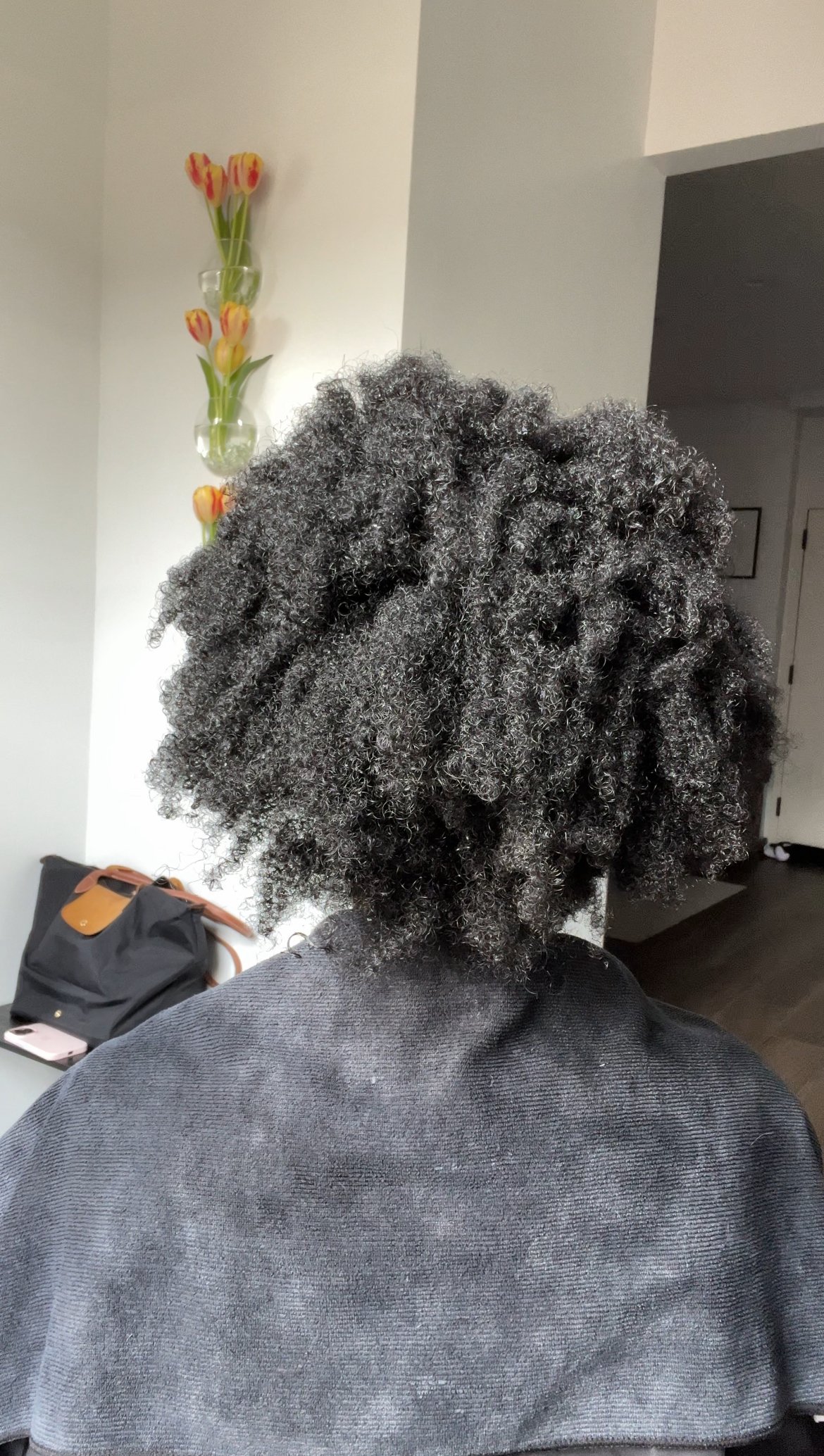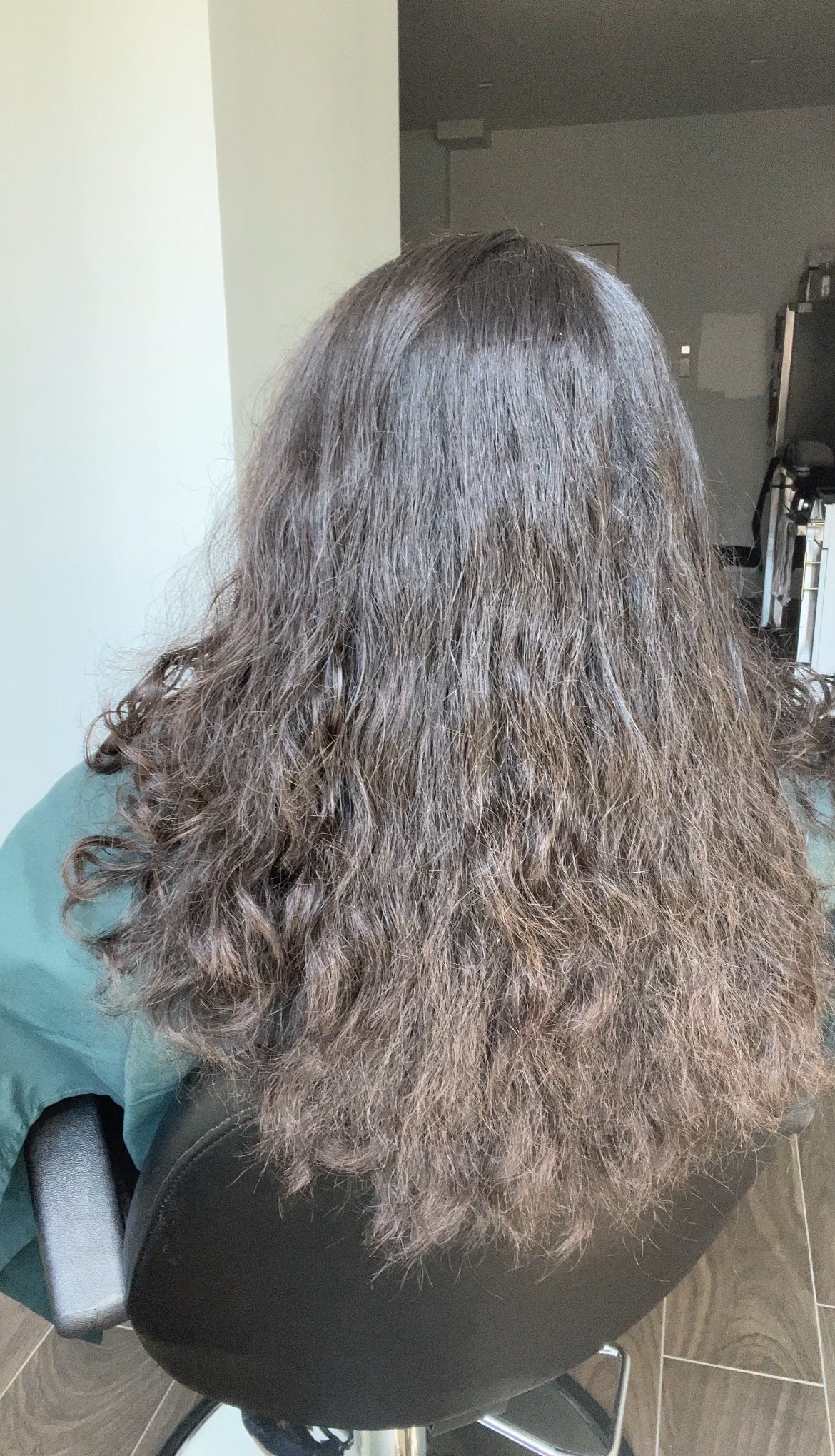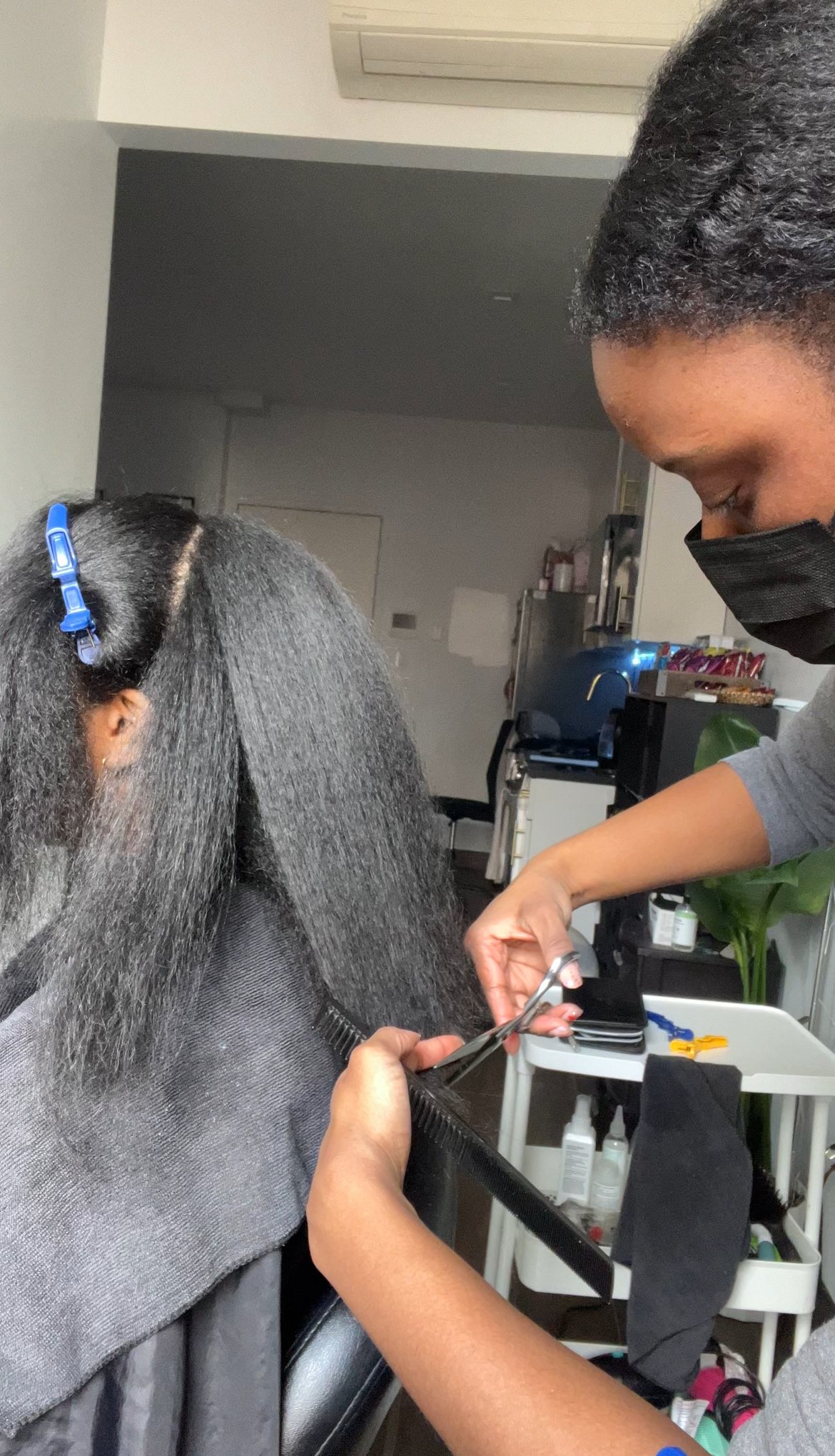Why Hair Elasticity is Important
What Is Hair Elasticity?
*This post contains affiliate links*
Hair elasticity is an important characteristic of your hair that determines its overall health and strength. It refers to the ability of your hair strands to stretch and return to their original length without breaking or snapping. In simpler terms, it is the measure of how much your hair can withstand tension before reaching its breaking point.
Hair elasticity is crucial as it allows you to style, brush, and manipulate your hair without causing damage or breakage. Additionally, understanding your hair's elasticity can also help you determine the best products and techniques for maintaining healthy and strong locks.
In this article, we will dive deeper into the concept of hair elasticity, its role in maintaining healthy hair, and ways to improve or maintain it. So let's get started!
What is Hair Elasticity?
Hair elasticity is determined by the protein structure of your hair, specifically a protein called keratin. Keratin makes up the majority of your hair's composition and is responsible for its strength and flexibility. The more elastic your hair is, the healthier it tends to be.
There are three main types of hair elasticity: low, normal, and high. Low elasticity means that your hair has a hard time stretching and returning to its original length, making it prone to breakage and damage. On the other hand, high elasticity means that your hair can stretch significantly without breaking or losing its shape.
To determine your hair elasticity, perform a simple test called the "strand test." Take a clean strand of hair from your brush or comb, hold it between two fingers, and gently stretch it. If the strand breaks easily or does not return to its original length, your hair has low elasticity. If it stretches a bit but then returns to its original length without breaking, you have normal elasticity. And if it stretches significantly and bounces back effortlessly, you have high elasticity.
Why is hair elasticity important?
Hair elasticity is crucial because it indicates the overall health and strength of your hair. When your hair has good elasticity, it can withstand daily wear and tear from styling, heat, and environmental factors without breaking or becoming damaged. It also means that your hair is well-moisturized and has a good balance of protein and moisture.
On the other hand, low elasticity can lead to hair breakage, split ends, and frizz. This is because the hair strands are weak and unable to handle any tension or manipulation. Low elasticity can be caused by various factors such as over-processing with chemicals or heat damage.
High elasticity may seem like a desirable trait for hair, but it can also indicate an underlying issue. Excessive stretching of the hair strands can cause damage to the cuticle layer, leading to breakage and loss of shape in the curls. High elasticity can also be caused by over-moisturized hair, which lacks protein and becomes weak.
What affects hair's elasticity?
Several factors can affect your hair's elasticity, including genetics, age, and external factors. Some people are born with naturally high or low elasticity due to their genetics. As we age, our hair also tends to lose some of its elasticity due to a decrease in collagen production.
External factors such as heat styling, chemical treatments, and environmental stressors like pollution and UV rays can also impact hair elasticity. Overexposure to these elements can damage the protein structure of the hair and lead to low elasticity.
Another factor that affects hair elasticity is your hair care routine. If you use harsh products or overuse heat tools without proper protection, it can cause damage and weaken the hair strands' ability to stretch.
Plus, not getting enough nutrients and moisture can also affect hair elasticity. A balanced diet that includes protein, vitamins, and minerals is essential for maintaining healthy and elastic hair.
Why Curly Hair is More Prone to Damage
Curly hair is naturally more prone to damage due to its structure. The curls and coils of curly hair make it more vulnerable to tangling, breakage, and loss of elasticity.
The curl pattern of curly hair creates bends and curves in the hair shaft, making it harder for natural oils from the scalp to travel down the hair strand. This can result in dryness and lack of moisture, which affects the overall health and elasticity of the hair.
Additionally, detangling and styling curly hair can cause stress on the strands, leading to breakage if not done carefully. That's why it's essential to use gentle techniques when handling curly hair and using products specifically designed for its needs.
Plus, curly hair is more prone to frizz, which can also affect elasticity. Frizz occurs when the cuticle layer of the hair becomes raised and rough, causing the hair strands to tangle and break easily.
How to fix hair elasticity
If you have low or high elasticity, don't worry; there are ways to improve and maintain your hair's elasticity. The key is to find a balance between moisture and protein.
For low elasticity, incorporate protein treatments into your hair care routine. Look for products that contain ingredients like keratin, collagen, or amino acids. These treatments will help strengthen the hair strands from within and improve their ability to stretch without breaking.
For high elasticity, deep conditioning treatments can help add moisture and restore balance to your hair. Avoid using heat tools frequently and opt for air-drying instead. You can also try incorporating more protein-rich foods into your diet to nourish your hair from the inside out.
Additionally, make sure to use gentle hair products and avoid over-manipulating your hair. Limit the use of heat tools and protect your hair with a heat protectant when necessary.
Mistakes to avoid
When it comes to maintaining hair elasticity, there are some common mistakes to avoid. Here are a few:
Overusing heat tools without proper protection: Regular use of heat styling tools can damage the protein structure of your hair, leading to low elasticity. It's essential to use a heat protectant before using any heat tools and limit their use as much as possible.
Over-washing or under-washing: Washing your hair too often or not enough can both affect its elasticity. Over-washing can strip away natural oils that keep your hair moisturized, while under-washing can cause product buildup, which can weigh down the hair strands and make them less elastic.
Using harsh products: Avoid using products with sulfates and other drying ingredients that can strip the hair of its natural moisture and weaken its elasticity. Plus, be cautious of overusing chemical treatments, such as hair dye and bleach, which can also cause damage.
Skipping regular trims: Split ends and damaged hair can significantly impact your hair's elasticity. Make sure to book regular trims every 8-12 weeks to prevent split ends from traveling up the hair shaft and causing further damage.
Neglecting a healthy diet: As mentioned, a balanced diet is crucial for maintaining hair elasticity. Make sure to consume enough protein, vitamins, and minerals through your meals or consider taking supplements if necessary.
By avoiding these mistakes and incorporating healthy hair habits into your routine, you can maintain optimal hair elasticity and keep your locks looking strong and healthy. Remember to listen to your hair and adjust your routine accordingly based on its needs.
Elasticity hair care routine
A hair care routine that focuses on maintaining and improving hair elasticity should include a good balance of protein and moisture. Here are some tips to help you create an elasticity-focused hair care routine:
Use a gentle shampoo: Look for shampoos that are sulfate-free and contain moisturizing ingredients. Avoid over-washing your hair, as this can strip away natural oils. The Moisture Shampoo has a rich creamy texture for maximum hydration without weighing hair down.
Incorporate protein treatments: As mentioned earlier, protein treatments can help improve low elasticity in hair. Use these treatments once or twice a month, depending on your hair's needs.
Deep condition regularly: Deep conditioning treatments can help add moisture to high elasticity hair. Use a weekly deep conditioning treatment like the Deep Repair Treatment that is infused with keratin protein to rebuild the hair. Also incorporate a leave-in conditioner like the Emergency Miracle Treatment into your routine for added hydration.
Protect your hair: Limit the use of heat tools and always use a heat protectant when using them. Additionally, protect your hair from environmental stressors like pollution and UV rays by wearing a hat or using protective styling products.
Get regular trims: As mentioned in the previous section, Booking regular trims is essential for maintaining healthy hair and preventing split ends from traveling up the hair shaft.
Nourish from within: Remember to nourish your hair from the inside out by consuming a balanced diet that includes protein, vitamins, and minerals.
By incorporating these steps into your routine, you can maintain optimal elasticity in your hair and keep it looking healthy and strong. Don't be afraid to listen to your hair's needs and adjust your routine as necessary. With proper care, you can have bouncy, elastic hair that is resilient to damage.
Best hairstyles to improve elasticity
While there are many ways to improve and maintain hair elasticity, certain hairstyles can also help. Here are some of the best hairstyles to consider if you want to improve your hair's elasticity:
Avoid tight hairstyles that pull on your hair, such as tight ponytails or braids. These can cause tension and stress on the hair strands, leading to breakage and damage. Opt for looser styles like loose braids or buns, which allow more flexibility and movement for your hair. You can also try out protective hairstyles such as twists or low manipulation styles like wash-and-go's to minimize damage.
Additionally, incorporating hair accessories like silk scrunchies or headbands can help prevent breakage and maintain elasticity. Silk is a gentle material that creates less friction on the hair strands, thus reducing damage.
When wearing hairstyles that require heat styling, make sure to use a heat protectant and avoid using high temperatures. You can also try using rollers or flexi rods to create curls without heat.
With these hairstyle tips in mind, you can rock beautiful styles while maintaining healthy and elastic hair. Remember to listen to your hair and give it the care it needs for optimal elasticity.
By following these tips, you can keep your natural hair healthy and elastic. Remember to also listen to your hair's needs and adjust your routine as necessary. With proper care, you can maintain beautiful, bouncy curls with optimal elasticity.
FAQs
Is it possible to improve hair elasticity?
Yes, it is possible to improve hair elasticity by incorporating the right techniques and products into your hair care routine. This includes using protein treatments, deep conditioning regularly, avoiding harsh chemicals, and protecting your hair from damage.
Can genetics affect hair elasticity?
Yes, genetics can play a role in determining your hair's natural level of elasticity. However, you can still maintain healthy levels of elasticity through proper care and maintenance.
Are there any specific vitamins or supplements that can improve hair elasticity?
While there is no specific vitamin or supplement that directly improves hair elasticity, a balanced diet rich in protein and essential vitamins and minerals can promote overall hair health. Consider incorporating foods such as salmon, eggs, and leafy greens into your diet for optimal hair health. Consult with a healthcare professional before starting any new supplements.
Conclusion
In conclusion, hair elasticity is essential for maintaining healthy and strong hair. By following the tips and techniques mentioned in this guide, you can improve and maintain optimal elasticity in your hair. Remember to nourish your hair from within, protect it from damage, and listen to its needs.
With proper care and maintenance, you can achieve beautiful, elastic hair that is resilient to damage. So go ahead and start incorporating these tips into your routine for bouncy and healthy locks! So let's rock those hairstyles with confidence, knowing that our hair is strong, flexible and healthy!










